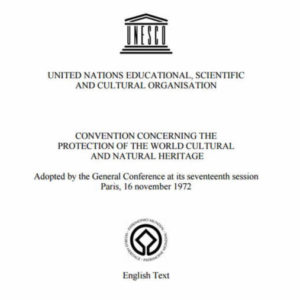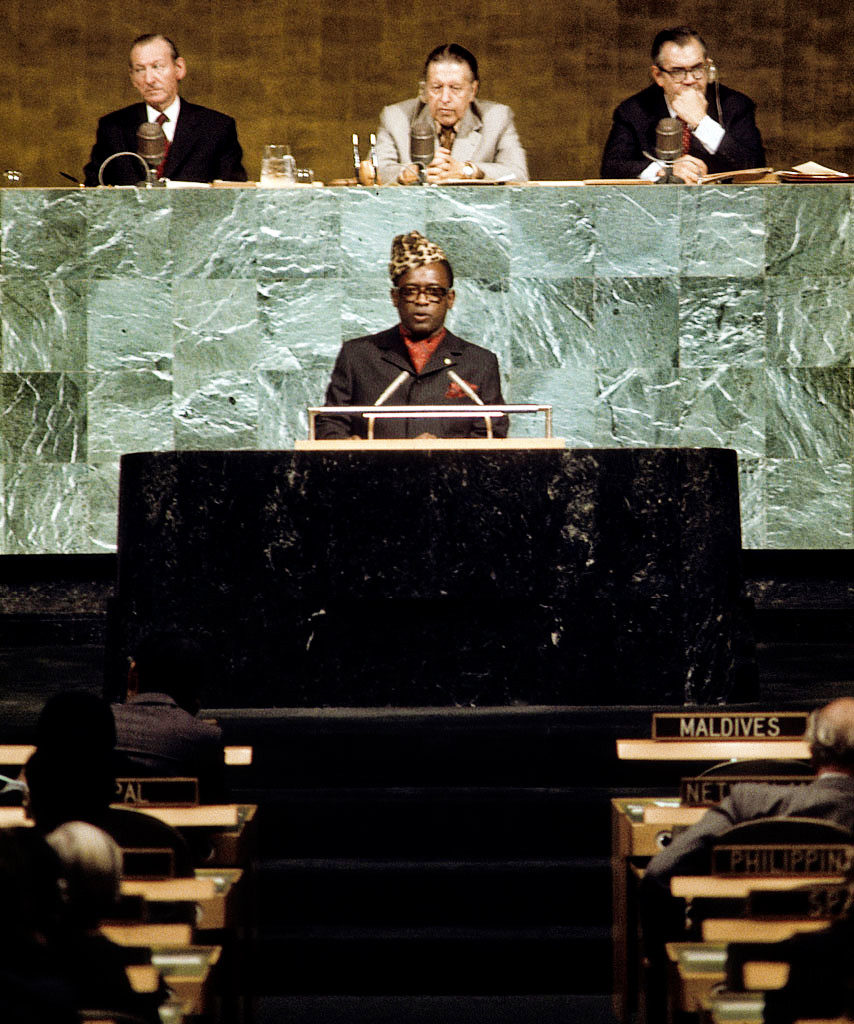The pitfalls of ‘shared heritage’
As a historian of museum institutions on the African continent, and as someone who has chronicled the histories of earlier disputes around restitution, I have been following the growing debates around the reinstallation of European museums with great interest. They are, at least in part, responsible for the recent revival of debates around the western possession of African heritage. In particular, this connection is apparent in the projected reinstallation of the collections of the Staatliche Museen zu Berlin in the Humboldt Forum, slated to open in December 2019, as well as in the renovation and reinstallation of the Africa Museum in Tervuren, Belgium, slated to reopen this December. The leadership of these institutions have, to their credit, engaged with the existing debates. However, in doing so, both Hermann Parzinger, head of the Humboldt Forum and Guido Gryseels, director of the Belgian Royal Museum for Central Africa, have used the concept of ‘shared heritage’ (patrimoine partagé) to define their collections, as a way to address a common history and to recognize the importance of the objects in their institutions for multiple communities.[1] I want to explore the historical trajectory of that term and its consequences here.
The concept ‘shared heritage’ is only the newest iteration in a longer history of reformulating and transforming the identity of the objects under discussion, a trajectory that can be traced in the language used to describe them. Words such as artefact, art, masterpiece, and heritage emerged in specific historical contexts and reflect the evolution of these objects as they became more valuable, both in a cultural and in a financial sense. Each of these reinventions, of course, says more about the life of these objects in museum collections in the global north than it does about their points of origin.
Of particular relevance for the discussion here is the emergence of the concept of ‘world heritage’ in the late 1960s and early 1970s and its subsequent widespread use. Not coincidentally, this concept was popularized in the aftermath of a sweeping global movement for decolonization. The World Heritage Convention of 1972 was an important pillar in the emergence of an international conservation regime in which the universal value of heritage for mankind was delineated. UNESCO world heritage recognition has certainly had benefits for the African continent in the form of UNESCO world heritage sites, for example, but it has also had a dark side, specifically with regard to African claims for repatriation or restitution.

Image 1: UNESCO convention on world heritage, 1972.
The 1972 convention took place in the aftermath of another convention relevant to the current debate: the 1970 UNESCO Convention on the Means of Prohibiting and Preventing Illicit Import, Export and Transfer of Ownership of Cultural Property (Yes, that’s really its title—and a testament to what lengths one must go to in order to avoid the words ‘repatriation’ and ‘restitution.’) Created to help nation-states protect the cultural heritage within their borders from illegal removal, it was an important step forward in the recognition of the importance of cultural property for nation-states, and an attempt to curb its unsanctioned circulation. Yet the convention had an important caveat: despite the best efforts of former colonies to make these regulations useful to the debate about objects removed during decolonization, the convention was non-retroactive, precluding any conversation about colonial restitution.
Although this provision was contested—for example, by Zairian ruler Mobutu Sese Seko in a 1973 UN speech—it was never revised or overhauled. UNESCO did respond to criticism by establishing an Intergovernmental Committee, but the debate around naming this committee—which had to be changed from the „Intergovernmental Committee Concerning Restitution or Return of Cultural Property“ to the clunky Intergovernmental Committee for Promoting the Return of Cultural Property to its Countries of Origin or its Restitution in Case of Illicit Appropriation (ICPRCP)—only underscored the contentious nature of its subject.[2] In essence, the committee encourages and facilitates discussions about potential cases for restitution in situations where bilateral contacts were unfruitful, usually in a context of preservation and development.
 Image 2: Mobutu addressing the UN, 1973.
Image 2: Mobutu addressing the UN, 1973.
A mere six cases have been resolved before the ICPRCP, and only one of them includes an African country. In 1984, a Makonde mask was stolen from a museum in Dar es Salaam and ended up in the collection of the Barbier-Mueller museum in Geneva, Switzerland. Tanzania filed a claim for its return in 2006 which was honored 2010.[3] The key ingredients of the successful Tanzania-Switzerland case—a relatively recent theft, the focus on a single object, a respected local museum to accept its return, a state as the source of the claim, and a possessing party willing to enter talks—rarely align so nicely and demonstrate why so few cases have been brought before the ICPRCP. The process and administrative protocols for filing claims require the involvement of governments and a clear documentary record. As historians of colonialism know, the silences in colonial archives are considerable—and significant—limiting the possibilities of just this sort of provenance research.
The combined lessons of the 1970 and 1972 UNESCO conventions teach us that seemingly neutral concepts and international organizations can work to the detriment of the interests of former colonies. As famed heritage scholar David Lowenthal has remarked “Universalism endows the haves at others’ expense.”[4] Casting objects from former colonies as ‘world heritage’ weakened claims for repatriation and restitution since it allowed museums to argue for the universal value of the material they possessed, and therefore their continued custodianship of the objects was in the best interest of the materials. In many cases, this rhetoric did not move far from colonial arguments about protection and custodianship.
In moving to the idea of ‘shared heritage,’ we should be mindful of the history and inequalities behind the language and practices of global heritage protection. Parzinger himself references the connection between shared heritage, trusteeship, and the heritage of humanity when he writes “The concept of shared heritage is founded on the conviction that museums are merely the trustees of a cultural heritage that belongs, in essence, to the whole of humanity.”[5] Despite best intentions, ‘shared heritage’ carries within it the same potential justifications for continued western custodianship of materials under dispute.
My critique does not deny that we need a nuanced view on colonial ‘collecting’ (another term that is asked to do a lot of work, some of it obscuring violence) that recognizes the various routes by which objects reached museums, including commercial exchanges and gifts. I do, however, hope to highlight that the use of the seemingly neutral ‘shared heritage’ suggests an equilibrium that pre-emptively erases the context of inequality and colonialism in which this collecting took place. After all, the reality is that the possession of this material is currently not shared. We should be able to have a historically sensitive discussion that recognizes past and contemporary imbalances of power and possession. This historical context needs to be recognized not only in the language we use, but also in the local, national and international regulations we apply.
Sarah Van Beurden (PhD University of Pennsylvania) is an associate professor of History and African American and African Studies at the Ohio State University. She is the author of Authentically African: Arts and the Transnational Politics of Congolese Culture (New African Histories Series, Ohio University Press, 2015) and several articles and chapters on Congolese art, decolonization, art restitution, African museums, and heritage politics.
––––
[1] https://www.preussischer-kulturbesitz.de/en/newsroom/dossiers-and-news/all-dossiers/dossier-humboldt-forum/shared-heritage.html and https://www.rtbf.be/auvio/detail_l-invite-actu?id=2357192
[2] For more on the role of Mobutu in this debate, see: Sarah Van Beurden, The Art of (Re)Possession: Heritage and the Cultural Politics of Congo’s Decolonization” Journal of African History Vol. 56 , no. 1 (March 2015): 143-164.
[3] ICOM, Dossier de Presse: Masque Makonde. Signature d’un accord pour le don du Masque Makondé du Musée Barbier-Mueller de Genève au Musée National de Tanzanie. (Paris: ICOM, 2010.) For more on the UNESCO conventions and their limitations, see: Sarah Van Beurden, “Culture, Artifacts and Independent Africa: The Cultural Politics of Museums and Heritage” The Palgrave Handbook of African Colonial and Postcolonial History, edited by Toyin Falola and Martin S. Shanguhyia (New York: Palgrave-Macmillan, 2018) 1193-1212.
[4] David Lowenthal, The Heritage Crusade and the Spoils of History. (Cambridge: Cambridge University Press, 1998) 242.
[5] https://www.preussischer-kulturbesitz.de/en/newsroom/dossiers-and-news/all-dossiers/dossier-humboldt-forum/shared-heritage.html































